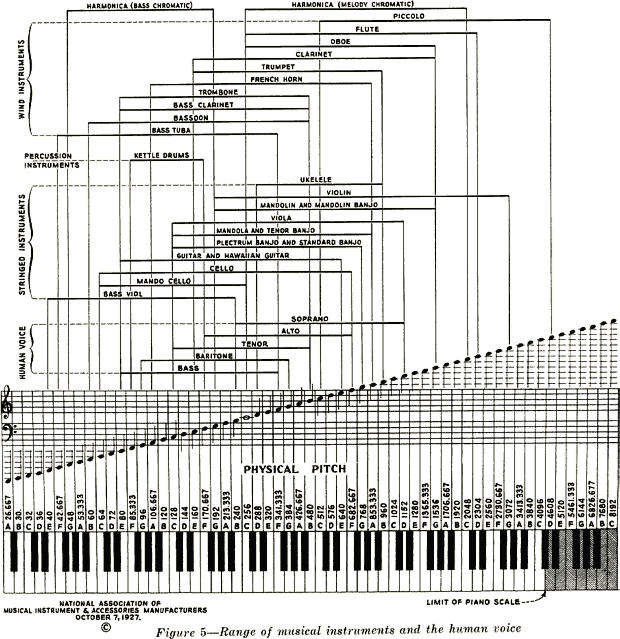The frequency of an overtone is always some multiple of the pitch frequency; that is, the second overtone has twice the frequency of the pitch note, and the third overtone, three times the frequency, etc. Overtones of twenty times the frequency of the pitch note are present in the sounds of some musical instruments, but overtones of this order are important only when the pitch note is low, because the frequency of the twentieth overtone of even a moderately high note would be beyond the ability of the human ear to detect. Overtones give character and brilliance to music, and their presence in reproduced sound is necessary if naturalness is to be attained. A reproducing device which reproduces frequencies from 50 cycles to 6000 cycles will cover very well all the notes and overtones necessary for naturalness and distinctiveness.

In singing, the range of notes covered is from 80 to 1200 cycles, but this range cannot be covered by one person's voice. The frequency of 1200 cycles does not represent the highest frequency used in singing, because overtones of several times the frequency of the note are always present in the human voice. The presence of the overtones gives the pleasing quality to songs. This quality of the singing voice is called "timbre." The timbre of the voice transmits the emotions of joy, sadness, etc., from the performer to the audience, and therefore is very important in the enjoyment of vocal music.
5
